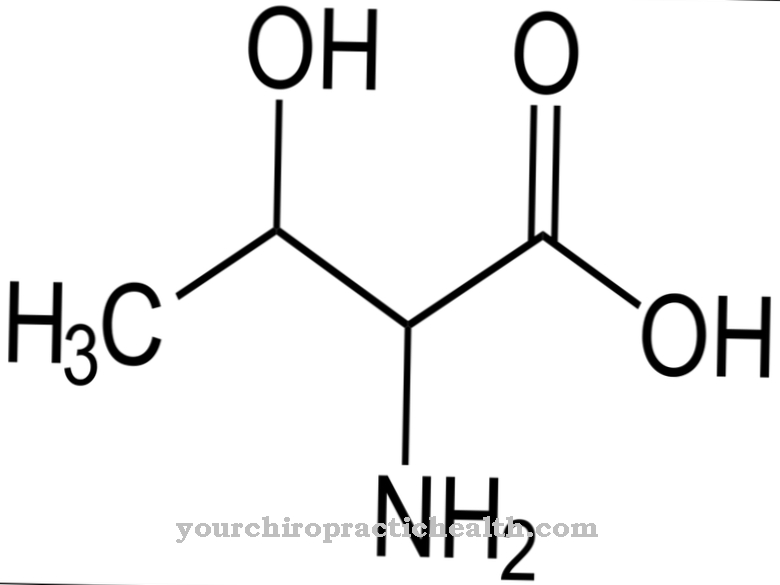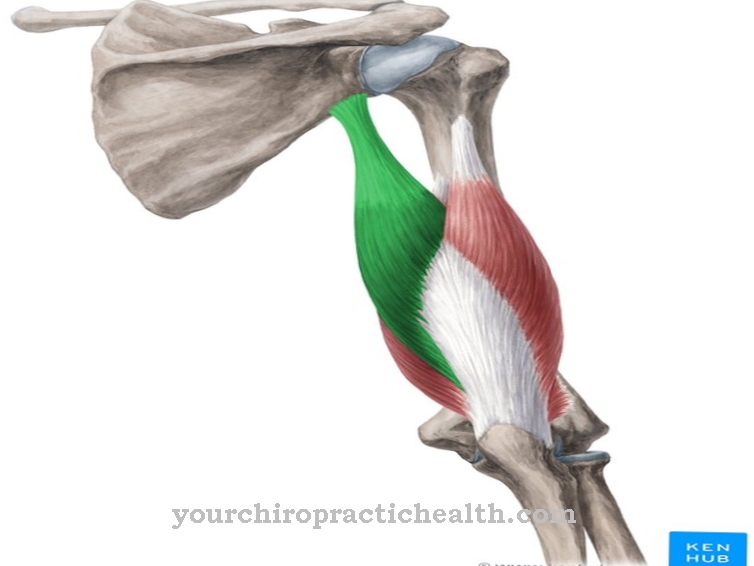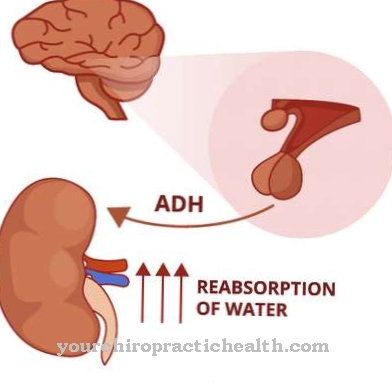If you dig deeper into medical books and guidebooks and read what was known about this disease about forty years ago under the heading of diabetes mellitus, you learn that a person with diabetes had no good prospects of recovery at that time.
Insulin for diabetes

For him the only commandment was to strictly avoid all carbohydrates and replace them with fat in the diet. At that time it was believed that energy can mainly be obtained through fat, since one gram of fat provides around 9 calories. The success of this diet was mostly devastating in serious illnesses.
After periods of severe starvation, the sick had to notice that their body reserves were dwindling despite the increased intake of fat, so that they had to surrender to their fate without power and also refused medical help.
That changed suddenly when the Canadian researchers Banting and Best found the active ingredient in the pancreas, insulin, in 1922 and were able to isolate it in such a way that it could be used by people with diabetes. A new, great hope enriched the life of diabetics at that time, which was almost no life before one learned how to use insulin.
In order to understand the importance of insulin for the body, one has to know that all nutrients that are broken down into sugar in the human digestive tract are subject to a metabolism that creates combustible energies that provide the body with the fuel it needs.
Without these available energies we would not be able to do any purposeful work and would soon feel exhausted and tired, even sick.
In order to use the glucose in our blood, a hormone from the pancreas - insulin - is necessary. The action of the insulin not only converts the blood sugar into energy, but also creates a reserve of reserve substances in the form of starch from the excess glucose in the liver.
These processes are imperfect when there is a lack of insulin, depending on the degree of the disease, so that this disease situation is worsened by every excess of ingested sugar.
treatment
The research results of Banting and Best made it possible to apply insulin by injections in such a way that the body is artificially supported in its metabolism. However, regular injection is a prerequisite for successful treatment.
In the course of time, the diabetic learned to use the injection syringe themselves as doctors and nurses can. In this way they created not only a relief for the medical staff, but also their own independence. Travel became possible again, and the diabetic was able to pursue his professional and family obligations again.
In the meantime, an old dream of those with diabetes has come true. A large number of them can do without the syringes and content themselves with tablets. However, the doctor alone decides which treatment method is appropriate. Unfortunately, tablet therapy, currently one of the most important treatment options for diabetic patients, cannot be used in all patients, and most likely not in adolescents. The insulin injection is therefore still the best treatment method to this day.
Sugar as the cause

These processes are imperfect when there is a lack of insulin, depending on the degree of the disease, so that this disease situation is worsened by every excess of ingested sugar.
Some readers will wonder how one actually diagnoses diabetes. The answer is simple: the glucose that is not used by the body is excreted in the urine. In this way, diabetes can be diagnosed very easily and precisely.
In the past, especially in the Middle Ages, when chemical examination methods were not yet possible, doctors had to - please don't be alarmed, it really was like that - taste and taste the urine.
The question often arises as to whether people who eat a lot of sugar do not get sick with sugar or diabetes. This question is not entirely unjustified, and many doctors are inclined to speak of diabetes as a gourmet disease. The cause is probably that diabetes is mainly common among rather fat, eager people who are over fifty years old.
Unfortunately, there are also many young, slim people, even children, who are afflicted with this disease.
Basically, it must be said that a moderate sugar intake does not harm the healthy organism, but if people suffer from insulin deficiency as a result of a disease of the pancreas, pure sugar in particular, be it in the form of beet or grape sugar, must be completely avoided.
Healthy eating & diet
In addition to drug treatment, the diet of diabetes sufferers is of great importance; it can even be said that it is not at all possible to treat diabetes without a diet. It is primarily important that the patient adheres to the prescribed and tested diet in a disciplined manner and that his daily food is precisely controlled and documented in a diet plan, since a number of foods may only be eaten in certain quantities.
Apart from the ban on sugar, the diet of the diabetic does not fundamentally differ from a wholesome diet for healthy people. If possible, it should contain plenty of fresh fruit and vegetables. In addition, carbohydrates, fats and protein play an important role.
The consumption of carbohydrates must be based on the degree of their digestibility. Bread, potatoes and flour may only be consumed in the permitted quantities, as they are biologically closely related to sugar. The less the organism has to try to convert a starch product into glucose, the more harmful it is for the patient.
For example, white bread is converted into glucose in a much shorter time than black and whole-grain bread. It is therefore generally not recommended for diabetics, as it would raise the blood sugar level very quickly. In addition, wholemeal bread is more beneficial for nutrition because of its vitamin and mineral content. The doctor will only recommend white bread in special cases of illness, such as additional intestinal diseases.
The carbohydrate restriction is balanced out by adequate protein intake. Since protein not only has a so-called carbohydrate-saving effect, but is also of great importance for the storage of starch in the liver cells, it occupies an important place in the diet of diabetics.
The source of calories for our body is fat. Today we know that it can only be fully evaluated by the human organism through the presence of carbohydrates, protein and sugar. This fact was completely misunderstood forty years ago. Because of its high calorie content, fat patients may not consume more than 30 to 50 grams per day.









.jpg)













.jpg)



.jpg)
